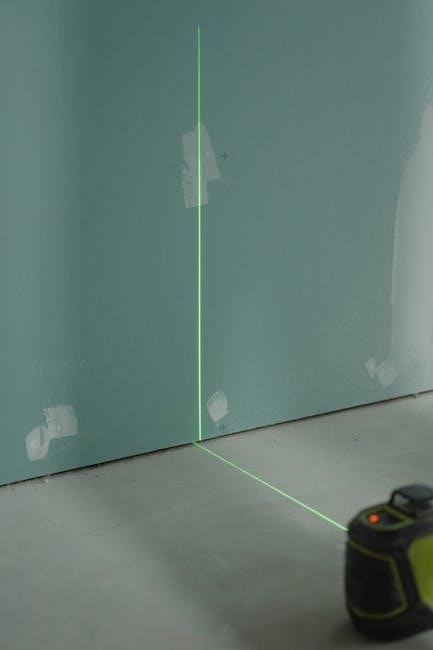
mode envoy build guide
Welcome to the Mode Envoy Build Guide, your comprehensive resource for assembling the Mode Envoy, a 65% custom keyboard designed for smooth typing and durability. This guide covers everything from unboxing to final assembly, ensuring a seamless experience for both newcomers and experienced builders.
Overview of the Mode Envoy Keyboard
The Mode Envoy is a 65% compact mechanical keyboard designed for versatility and performance. It features a sleek, durable design with an aluminum plate, offering a premium typing experience. Known for its smooth sound profile, the Envoy is praised for its stock performance, rivaling keyboards with advanced mods. Its compact layout makes it ideal for both productivity and gaming, while the included accessories enhance the overall value; As an entry-level custom keyboard, the Envoy delivers exceptional quality and functionality, making it a standout choice in its category.
Importance of a Comprehensive Build Guide
A comprehensive build guide is essential for successfully assembling the Mode Envoy, especially for first-time builders. This detailed guide simplifies the process, ensuring users understand each step, from preparing tools to final assembly. It covers unboxing, organizing components, and quality checks, providing clear instructions to avoid common mistakes. The guide transforms the assembly process into a smooth, enjoyable experience, allowing users to maximize the Envoy’s potential and achieve professional results. Whether you’re new to custom keyboards or an experienced builder, the guide ensures a flawless build every time.

System Requirements and Compatibility
The Mode Envoy is compatible with Windows, macOS, and Linux. Ensure your system has USB connectivity and necessary software tools installed for firmware and driver support.
Operating Systems Supported
The Mode Envoy is compatible with Windows, macOS, and Linux operating systems. It supports Windows 10 and above, macOS High Sierra or later, and most Linux distributions. The keyboard’s firmware is designed to work seamlessly across these platforms, ensuring consistent performance and functionality. Whether you’re using it for productivity or gaming, the Mode Envoy adapts to your operating system without requiring additional drivers. This universal compatibility makes it a versatile choice for users across different ecosystems.
Software Tools Needed for Firmware Installation
For the Mode Envoy, you’ll need specific software tools to install and configure the firmware. QMK Firmware or Vial are recommended for customizing keymaps and settings. Additionally, a text editor like Notepad++ or VS Code is necessary for editing configuration files. Ensure you have the latest version of these tools installed on your computer. These software tools will help you flash the firmware onto the microcontroller, enabling optimal performance and customization for your keyboard.

Preparation for Assembly
Begin by clearing your workspace and organizing all components. Ensure tools are within reach and review the build steps to plan efficiently.
Tools and Materials Required
To assemble the Mode Envoy, gather essential tools: a Phillips screwdriver, Allen wrench, diagonal cutters, wire strippers, soldering iron, and flux. Materials include switches, keycaps, stabilizers, screws, and USB cables. A switch puller and keycap tool are optional but recommended. Ensure all components are compatible and within reach. Workspace lighting and anti-static wrist straps are advisable to prevent damage. Lubricants like dielectric grease or switch lube may enhance smooth operation. Organize tools and parts neatly for an efficient build process.
Safety Precautions and Best Practices
When building the Mode Envoy, prioritize safety by grounding yourself to prevent static discharge, which can damage sensitive electronics. Use appropriate tools to avoid damaging components or causing injury. Work in a well-ventilated area, especially when soldering, to avoid inhaling fumes. Keep small parts like screws and stabilizers in a safe place to prevent loss. Cover your workspace with an anti-static mat or soft cloth to protect components from damage. Plan each step carefully and double-check connections before soldering to ensure a smooth build process.

Unboxing and Organizing Components
Carefully unbox and inspect all parts for completeness and damage. Organize components into labeled containers to ensure easy access during assembly.
Understanding the Packaging and Accessories
Upon unboxing, carefully examine each component to ensure all parts are included. The Mode Envoy typically arrives in separate, labeled bags for screws, stabilizers, and other small parts. Accessories like the manual, Allen wrench, and USB cable are usually packaged separately for easy identification. Verify the completeness of your kit to avoid missing items. Check for any visible damage, especially on fragile components like the PCB or plate. Organizing these parts by category will streamline your assembly process and prevent confusion later.
Sorting and Categorizing Parts
Sorting and categorizing parts is essential for a smooth build process. Begin by separating screws, switches, keycaps, and stabilizers into individual containers. Use small bags or trays to keep components organized and easily accessible. Label each category to avoid confusion. For example, differentiate between switch screws and plate screws. This step prevents losing small parts and ensures you can quickly locate what you need during assembly. A well-organized workspace saves time and reduces the risk of misplacing critical components. Keep larger parts like the case and PCB separate from smaller items to maintain clarity and focus during the build.

Case Assembly
Case assembly requires precise alignment and secure fastening of components to build a durable and functional keyboard. Proper structure ensures optimal performance, longevity, and ease of use every time.
Preparing the Case for Assembly
Begin by cleaning the case to remove any debris or protective films. Sand down any rough edges or burrs to ensure smooth assembly. Check the alignment of mounting points for the plate and PCB, using spacers or stand-offs if necessary. Organize the included screws and hardware, ensuring they match the build requirements. Clear all ports and openings to prevent obstructions. Consider applying damping material to reduce noise. Finally, ensure the case is ready for installing the plate and PCB without issues.
Installing the Plate and PCB
Align the plate with the case, ensuring it fits snugly and evenly. Secure it using the provided screws, tightening them gently to avoid warping. Next, place the PCB onto the plate, matching the mounting holes. Use screws to fasten the PCB, ensuring they are snug but not over-tightened. Connect any necessary components like switches and stabilizers, and ensure all cables are neatly routed. Finally, verify that the PCB is properly seated and all connections are secure before proceeding.
Securing the Case Parts Together
Once the plate and PCB are installed, carefully align the case halves together. Use the provided screws to secure them, tightening evenly to avoid warping. Ensure the screws are snug but not over-tightened. Double-check the alignment to prevent any gaps or misalignment. Use a screwdriver to apply even pressure across all screws for a stable build. Finally, verify that all components are firmly in place and the case feels rigid before moving on to the next steps.

Switch Installation
Switch installation is crucial for a smooth typing experience. Ensure switches are properly seated and aligned before securing them to the plate. Accuracy is key.
Choosing the Right Switches for Your Build
Selecting the ideal switches for your Mode Envoy build is essential for a personalized typing experience. Consider factors like actuation force, sound level, and feel. Linear switches offer smooth, quiet operation, while tactile switches provide feedback. Clicky switches are loud with a distinct bump. Decide based on your typing style, whether for gaming or productivity. Testing different types can help you make the best choice. This decision significantly impacts the keyboard’s performance and your satisfaction. Choose wisely to enhance your build’s functionality and enjoyment.
Installing Switches into the Plate
Begin by aligning the switch pins with the corresponding holes in the plate. Gently press each switch into place, ensuring it sits securely without forcing. Use a switch punch or similar tool if needed for even pressure. Avoid bending the pins, as this can damage the switch. Once all switches are installed, inspect the plate to ensure proper alignment and seating. This step is critical for a smooth typing experience and proper functionality of your Mode Envoy keyboard. Handle with care to prevent any damage during installation.
Aligning and Securing Switches Properly
After installing the switches, ensure each is perfectly aligned with the plate’s cutouts to prevent wobbling. Use a switch-aligning tool or a credit card to gently adjust their position. Once aligned, secure the switches firmly by ensuring the plate is tightly fastened. Double-check each switch for proper seating and stability. Avoid over-tightening, as this may damage the switches or plate. Proper alignment and securing are crucial for consistent actuation and a smooth typing experience. Test a few keys to confirm they register correctly and feel even.
Keycap Placement and Alignment
Proper keycap placement ensures a seamless typing experience. Use a keycap puller to securely fasten caps, aligning them with switches. Accuracy enhances performance and aesthetics.
Understanding Keycap Layouts and Profiles
Keycap layouts determine the arrangement of keys, such as QWERTY or Dvorak, while profiles refer to their shape and depth. Profiles like OEM, Cherry, or MT3 vary in height and curvature, affecting ergonomics and typing feel. Layouts can be standardized or custom, depending on personal preference or specific use cases. Understanding these factors ensures compatibility with your keyboard’s design and enhances typing comfort. Profiles also impact sound and tactile feedback, making them crucial for optimizing your Mode Envoy build.
Aligning Keycaps with Switches
Properly aligning keycaps with switches is crucial for smooth operation. Start by visually matching the keycap stem to the switch’s center. Gently press the keycap down, ensuring it sits evenly without tilting. Use a keycap puller if needed for stubborn caps. Verify alignment by checking stability and evenness. Misaligned keycaps can cause uneven typing or mechanical issues. Double-check each keycap’s position before securing it firmly. This step ensures optimal tactile feedback and prevents potential damage to switches or stems.
Securing Keycaps Firmly
Securing keycaps firmly ensures a stable and responsive typing experience. Once aligned, press each keycap down with gentle yet firm pressure, starting from the center and moving outward. Use a keycap puller or rubber mallet if additional force is needed. Avoid excessive force to prevent damaging the stems or switches. Double-check each keycap to ensure it is snug and even. Properly secured keycaps reduce wobble and enhance tactile feedback, ensuring reliable performance for years to come.

Stabilizer Installation
Stabilizers enhance typing stability and consistency, especially for larger keys. They reduce wobble and ensure smooth, even key presses, improving overall keyboard performance and durability.
Importance of Stabilizers for Smooth Typing
Stabilizers are essential for ensuring smooth and consistent typing. They prevent key wobble, providing stability and even actuation, especially for larger keys like the spacebar and shift keys. By minimizing lateral movement, stabilizers reduce finger fatigue and improve accuracy. They also help maintain a consistent typing feel across the keyboard, making them crucial for both performance and comfort. Properly installed stabilizers enhance the overall typing experience, ensuring reliability and durability over time.
Installing Stabilizers into the Plate
Begin by aligning the stabilizers with the designated slots on the plate. Gently insert the stabilizer wire into the slot, ensuring it sits flush and even. Use a pair of tweezers or your fingers to guide it into place. Once aligned, press down firmly to secure the stabilizer. Repeat for all necessary keys, such as the spacebar and shift keys. Make sure they are evenly seated to avoid uneven typing feel. Proper installation ensures smooth operation and prevents rattling or instability during use.
Adjusting Stabilizers for Optimal Performance
After installing stabilizers, fine-tune them by gently turning the adjustment screws with a screwdriver. Ensure the stabilizer wires are evenly tensioned to prevent wobbling or binding. Test the keys to confirm smooth, consistent movement. Over-tightening can restrict key travel, while under-tightening may cause instability. Aim for a balance where keys feel stable yet responsive. Proper adjustment enhances typing accuracy and overall keyboard performance, making it essential for a polished build. Regular checks and minor tweaks can maintain optimal functionality over time.

Firmware Installation
Install firmware to unlock advanced features and customize keyboard functionality; Follow step-by-step guides for a seamless setup and ensure optimal performance of your Mode Envoy keyboard.
Downloading and Installing Necessary Firmware
To start, download the latest firmware from the official Mode Envoy website or trusted sources. Ensure the firmware version is compatible with your keyboard’s hardware. Use tools like QMK Toolbox for installation. Connect your keyboard to the PC, enter bootloader mode (usually by pressing keys like ‘LShift + RShift + B’ or using a reset button), and flash the firmware. Follow on-screen instructions carefully and avoid interrupting the process. Refer to the documentation for specific steps and troubleshooting tips to ensure a smooth installation. This step is critical for enabling keyboard functionality and customization.
Configuring Firmware Settings for Customization
After installing the firmware, customize your keyboard using QMK or Vial configuration tools. Define keymaps to suit your typing preferences, adding layers for media controls or macros. Adjust backlighting and RGB effects to enhance aesthetics. Set debounce timing for optimal switch performance. Explore advanced features like tap-and-hold keys or one-handed typing modes. Save your configuration and flash it to the keyboard. Test all keys to ensure functionality. This step personalizes your Mode Envoy, making it tailored to your needs and preferences for a unique typing experience.
Testing Firmware Functionality
Once the firmware is installed, thoroughly test all keyboard functions to ensure proper operation. Verify that keys register correctly, and check the functionality of custom keybinds, macros, and layers. Test backlighting, RGB effects, and media controls if applicable. Confirm that stabilizers and switches perform smoothly. Validate that the keyboard connects properly via USB or Bluetooth, depending on your setup. Perform these tests with external devices to ensure compatibility. Address any issues promptly to ensure a seamless typing experience before finalizing the build.

Electronics Assembly
Focuses on installing and connecting electronic components like the MCU, wiring, and soldering to ensure proper communication between keyboard parts for optimal functionality and performance.
Installing the Microcontroller Unit (MCU)
The MCU is the brain of your keyboard, managing all inputs and outputs. Handle it by the edges to avoid static damage. Align the pins carefully with the socket on the PCB, ensuring proper orientation. Gently press the MCU into place until it clicks. If it doesn’t fit, do not force it, as this could cause damage. Once installed, connect the MCU to essential components like the USB-C port and diode. Secure all solder points to ensure reliable functionality. Double-check all connections for accuracy before proceeding.
Connecting and Soldering Wires
Begin by identifying the correct wires for each component, ensuring they are properly stripped and tinned. Use a soldering iron at the correct temperature to avoid damaging components. Carefully solder wires to the designated pads on the PCB, ensuring strong, clean connections. Avoid solder bridges or excess solder, as this can cause short circuits. Use heat-resistant tools or sleeves to protect wires from heat damage. Once all wires are soldered, inspect each connection for accuracy and integrity. Secure loose wires with zip ties to prevent movement during use.
Testing Electronic Components
Once all wires are soldered, use a multimeter to test for proper continuity and check for any short circuits. Power on the keyboard and verify that the microcontroller unit (MCU) lights up and responds. Test each key switch and ensure all inputs register correctly. If issues arise, inspect solder joints and connections for integrity. Use firmware tools to validate functionality and responsiveness. Address any malfunctioning components promptly to ensure optimal performance before final assembly.

Final Assembly and Testing
Combine all components, ensuring proper alignment and secure connections. Plug in the keyboard and test basic functionality. Verify all keys and features work smoothly.
Combining All Components
Carefully align the case, plate, and PCB, ensuring switches and stabilizers are properly seated. Gently press the keycaps onto the switches, verifying they click securely. Connect the MCU to the PCB and ensure all wires are tightly soldered. Double-check the alignment of all parts before finalizing the assembly. Handle components with care to avoid damage. Once everything is in place, proceed to the final testing phase to ensure all elements function seamlessly together.
Final Quality Check and Testing
Inspect the build for any visible issues, such as loose switches or misaligned keycaps. Test every key to ensure proper functionality and responsiveness. Verify that stabilizers operate smoothly without wobbling. Check the connectivity of the MCU and soldered wires to prevent short circuits. Plug in the keyboard and test firmware settings to confirm customization. Perform a thorough typing test to identify and address any inconsistencies. Address any issues promptly to ensure optimal performance before finalizing the build.
Troubleshooting Common Issues
Common issues during assembly include switches failing to register, keys sticking, or firmware malfunctioning. Check switch alignment and ensure they are properly seated. Verify keycaps are aligned with switches and securely attached. If stabilizers cause wobbling, adjust or lubricate them. For firmware issues, ensure the MCU is correctly connected and restart the software. Address these problems promptly to ensure smooth functionality. Persistent issues may require consulting the manual or community resources for detailed solutions.
Additional Tips and Tricks
Optimize performance by lubricating switches and stabilizers. Experiment with keycap profiles for a personalized feel. Ensure proper cable management for a clean, professional finish.
Optimizing Your Build for Performance
Lubricate switches lightly for smoother actuation and reduced noise. Ensure stabilizers are seated properly to prevent wobble. Experiment with keycap materials or profiles for enhanced feel and sound. Optimize firmware settings like debounce times for responsiveness. Regularly clean and maintain components to preserve functionality. Consider adding a gasket or o-ring for a refined typing experience. Properly align and secure the PCB to avoid movement during use, ensuring consistent performance.
Customization Options and Mods
Explore various case modifications, such as adding a weight or using alternate materials for a personalized look. Experiment with keycap sets or artisan caps to match your style. Consider switch swaps or spring replacements for a tailored typing feel. Add RGB lighting or underglow for aesthetic appeal. Install dampening materials like foam or gaskets to refine sound and feel. Explore advanced mods like split spacebars or rotary encoders for enhanced functionality. These customizations allow you to make the Mode Envoy truly unique to your preferences.
Maintenance and Upkeep Tips
Regularly clean your Mode Envoy to prevent dust buildup. Use compressed air to remove debris from keycaps and switches. Lubricate stabilizers periodically for smooth operation. Avoid excessive force when pressing keys to prevent damage. Store the keyboard in a dry, cool place to protect electronics. For long-term storage, consider desoldering and rewiring components to prevent oxidation. Clean keycaps with mild soap and water, but ensure they dry thoroughly before reinstalling. Consistent upkeep ensures optimal performance and extends the lifespan of your build.
Completing the Mode Envoy build guide equips you with essential skills and a fully functional, customized keyboard. Experience the satisfaction of a personalized typing experience and consider future modifications for enhanced functionality.
The Mode Envoy build process involves assembling the case, installing switches, keycaps, and stabilizers, followed by firmware and electronics setup. Each step requires precision and care to ensure proper functionality. From unboxing to final testing, the process transforms individual components into a fully operational keyboard. Paying attention to details like alignment and secure fastening is crucial for optimal performance. Completing the build successfully not only provides a functional device but also enhances technical skills and confidence in DIY projects.
Final Thoughts and Recommendations
Building the Mode Envoy is a rewarding experience that combines technical skills with creativity. For optimal performance, explore firmware customization and consider adding mods like dampeners or lubing switches. Regular maintenance, such as cleaning and inspecting components, ensures longevity. Experiment with different keycap profiles and switch types in future builds. Take pride in your handiwork and enjoy the satisfaction of using a keyboard tailored to your preferences. Happy building and typing!
Related posts:
Archives
Calendar
| M | T | W | T | F | S | S |
|---|---|---|---|---|---|---|
| 1 | 2 | 3 | 4 | 5 | 6 | 7 |
| 8 | 9 | 10 | 11 | 12 | 13 | 14 |
| 15 | 16 | 17 | 18 | 19 | 20 | 21 |
| 22 | 23 | 24 | 25 | 26 | 27 | 28 |
| 29 | 30 | 31 | ||||
Leave a Reply
You must be logged in to post a comment.